Adventurous Kate contains affiliate links. If you make a purchase through these links, I will earn a commission at no extra cost to you. Thanks!
What are the best places to visit in Lebanon? If you’re planning a trip to Lebanon, where should you go? Lebanon is a fantastic little country with so much to see!
The good news is that Lebanon is a compact country. So compact that it’s possible to base in Beirut the whole time and take day trips all over the country. That’s what I did on my trip — and it made it so easy to travel all over Lebanon while coming back to the same bed every night.
One of the things I love most about Lebanon is its cultural diversity. The population is about 45% Christian and 50% Muslim, with 18 recognized religious groups. There’s a sizable Armenian population, too, and people with origins all over the Middle East and the world.
Consequently, there are parts of Lebanon that feel very European, and parts of Lebanon that feel very Middle Eastern. Places where you can default to French and places where you’ll need to know a few words of Arabic.
Lebanon is geographically diverse, too — mountains, deserts, waterfalls, cities of all sizes. In Lebanon you could theoretically ski in the morning and lie on the beach in the afternoon! (Granted, you can only do that in the winter, so it wouldn’t quite be sunbathing weather, but I digress…)
Here are my picks for the best places to visit in Lebanon — along with how to get there, Lebanon safety information, and the best things to do in Lebanon.
Table of Contents
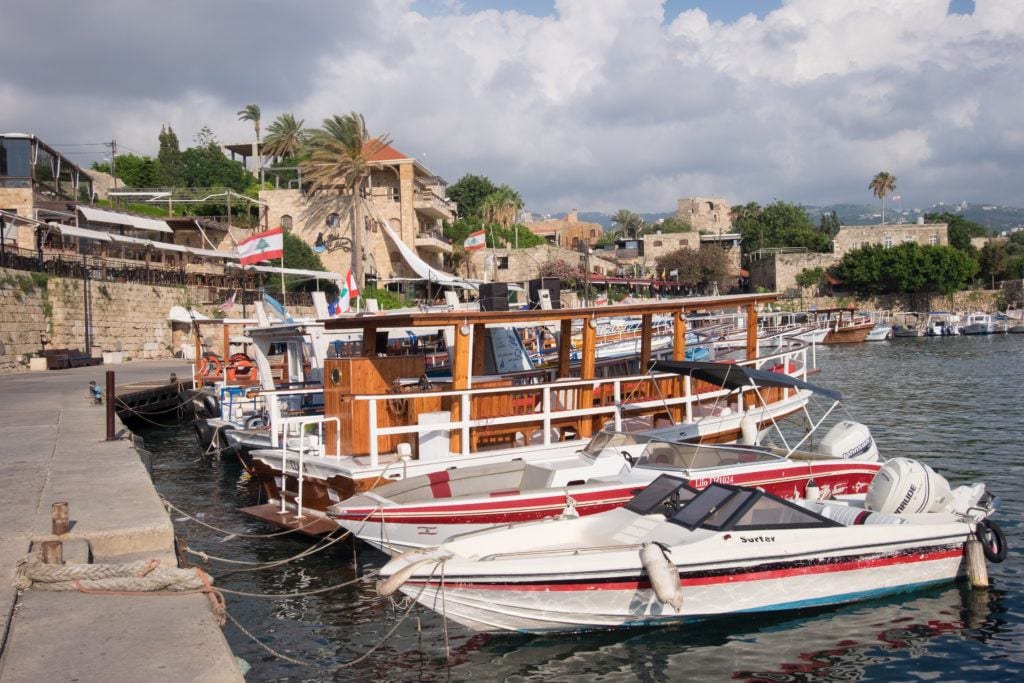
Best Places to Visit in Lebanon
All roads lead to Beirut in Lebanon, and Beirut makes a great base for your whole trip. But as far as day trips go, you have freedom to shake things up.
If you could only visit three places in Lebanon besides Beirut, I would recommend the seaside town of Byblos, the Roman ruins of Baalbek, and the small city of Tyre.
Lebanon is a lot safer than you think it is. You don’t need to worry about war or terrorism more than you do in other countries, and common sense will get you far, but it’s smart to check the latest news before you go.
Baalbek is in the Beqaa Valley, close to the Syria border in Hezbollah-controlled territory. To get to Baalbek, it’s best to hire a private driver or join a day tour from Beirut.
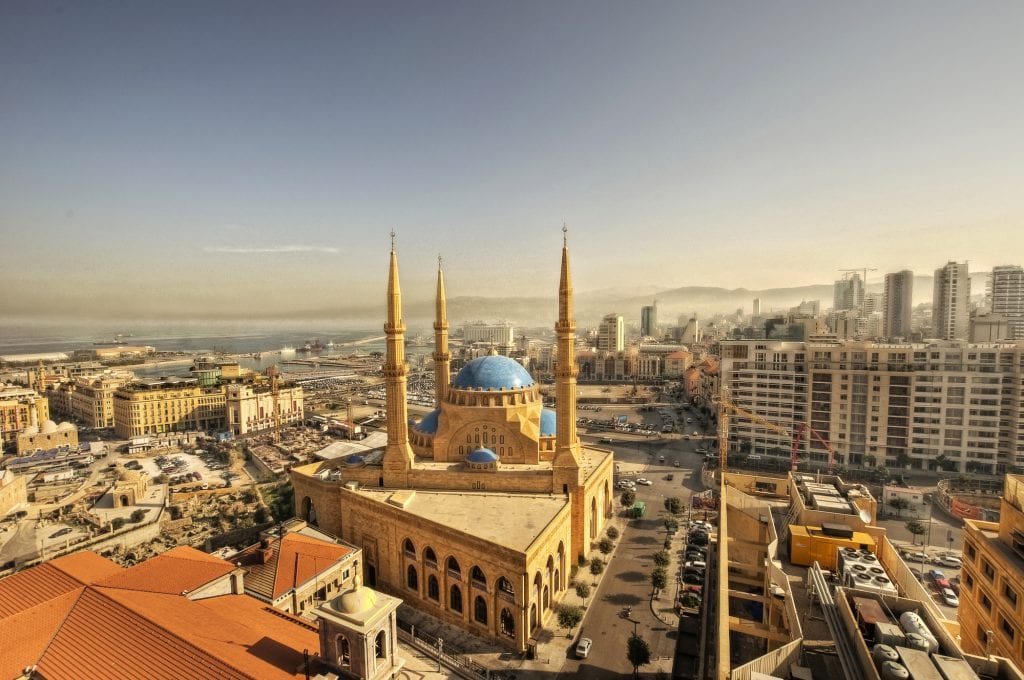
Beirut
Beirut is one of the best, most vibrant, most exciting cities in the Middle East. Because it’s much more liberal than other Middle Eastern cities, there is a huge party scene, from the wild beach clubs to the roof-retracting nightclubs. But beyond the nightlife, you have centuries of history and different cultures coming together. Oh, and did I mention how good the food is here?!
Have a night out bar-hopping on Armenia Street in Mar Mikael; stroll along the Corniche in the morning; check out the cafes on Hamrun Street; visit the National Museum of Beirut; take the Alternative Tour Beirut to learn more about Lebanon from a holistic perspective; spend a day at a beach club; shop in the Beirut Souks (more a mall than souks).
How to get to Beirut: Lebanon’s land borders are closed, so the easiest way to get to Beirut is to fly. Check Skyscanner for the best rates. There are also some ferries from Cyprus.
For me, Lebanon was part of a larger trip, so I flew to Beirut from Amsterdam via Istanbul on Pegasus Airlines. On the way back I flew from Beirut to Larnaca, Cyprus, spent a few days there, and flew back to Amsterdam.
Where to Stay in Beirut: See the Where to Stay in Lebanon section below for my top accommodation picks in Beirut.
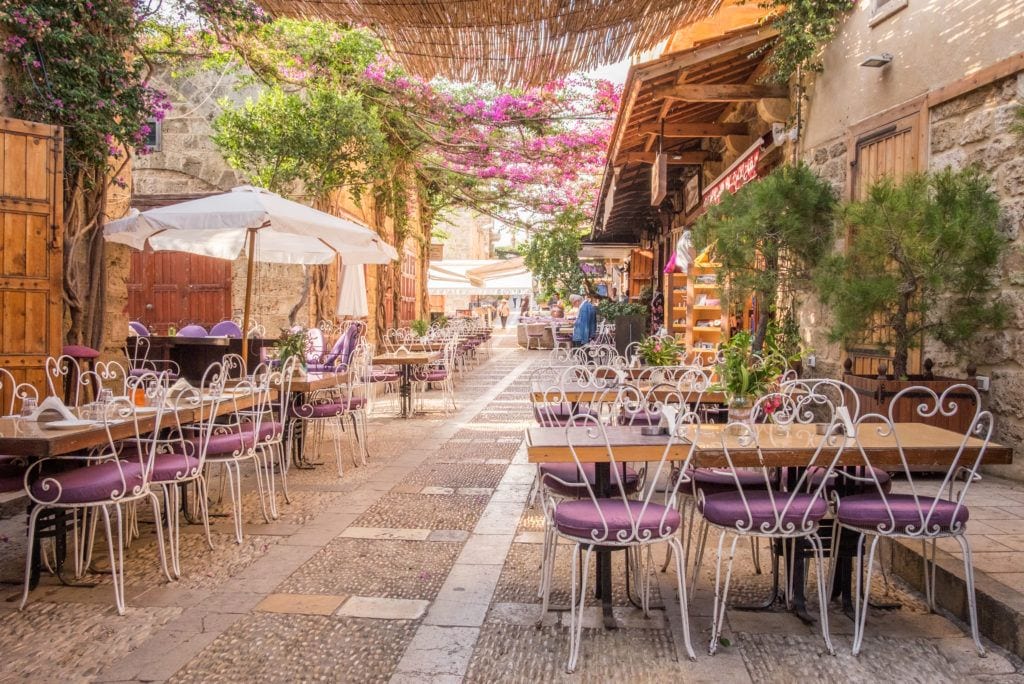
Byblos
Byblos — known as Jbeil in Arabic — is easily one of the most beautiful places to visit in Lebanon. This seaside village north of Beirut looks like it could be a coastal town in Montenegro with its teal waters, palm trees, sandstone old town, and mountains rising in the background.
You might notice that the word “Byblos” is related to books — well, there’s reason for that. Byblos was a trade center for papyrus, importing it from Egypt and exporting it throughout the Aegean, distributing the earliest books.
Today in Byblos, you can visit the ruins, walk along the water, shop in the souk (now filled with souvenir shops more than anything else), or enjoy fresh seafood at one of the cafes with a water view.
Byblos is one of Lebanon’s UNESCO World Heritage Sites, designated for being one of the oldest Phoenician cities, inhabited since Neolithic times, and for helping create the Phoenician alphabet.
How to get to Byblos: Byblos is about a 45-minute drive from Beirut. It’s doable with an Uber, but you may have trouble finding an Uber to take you back to Beirut. Minibuses to Byblos (Jbeil) leave from Charles Helou bus station in Beirut, though they drop you off along the highway, about a 15-minute walk from town. This day tour from Beirut includes Byblos, Jeita Grotto, and Harissa.
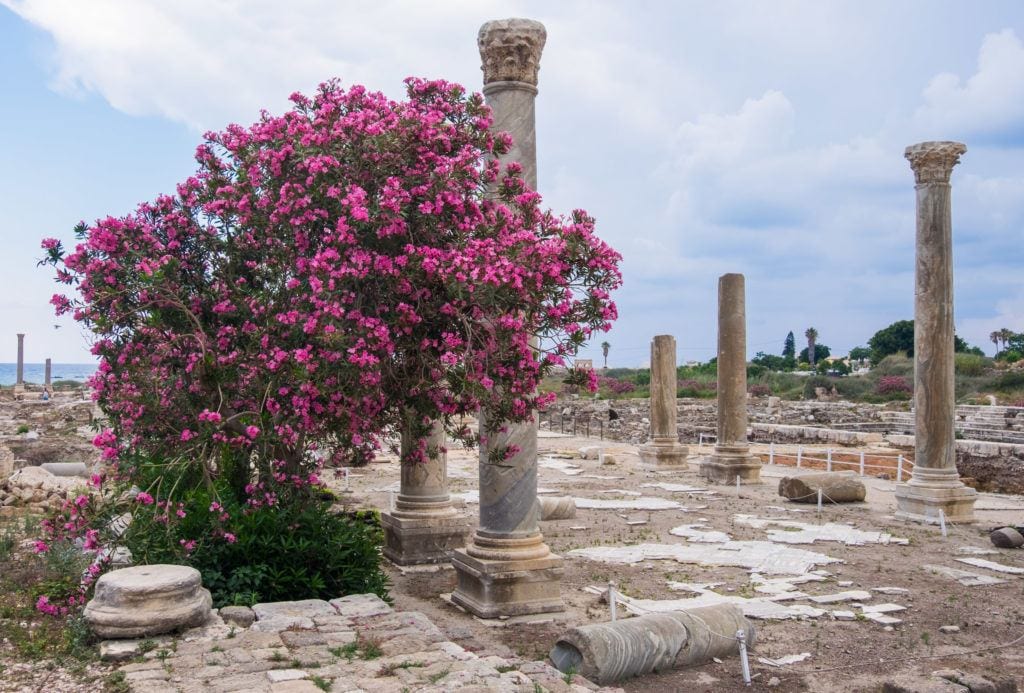
Tyre
Tyre, also known as Sour (pronounced soor), was one of the most important cities on the Mediterranean. Today, this city in southern Lebanon is home to fine Roman ruins perched up against the sea, a pleasant and walkable small town, incredibly friendly people, and fresh flowers bursting out in every direction.
Some places give you great vibes from the moment you arrive. That was Tyre to me. It was walking along the seaside and having fresh orange juice with a mother and her young son. It was being one of the few people at the ruins, wondering why it wasn’t full of tourists. It was wandering through the town and photographing each piece of it.
Tyre is one of Lebanon’s UNESCO World Heritage Sites, designated for its ancient ruins, history as a Phoenician city, founding of cities like Cadiz and Carthage — and their achievement of inventing purple dye!
How to Get to Tyre: Tyre is about a one hour and 45-minute drive from Beirut. For public transportation, the minibus to Tyre (Sour) leaves from Cola Intersection in Beirut and you may need to change minibuses in Sidon (Saida) along the way. This day trip from Beirut visits Tyre, Sidon, and Maghdouche.
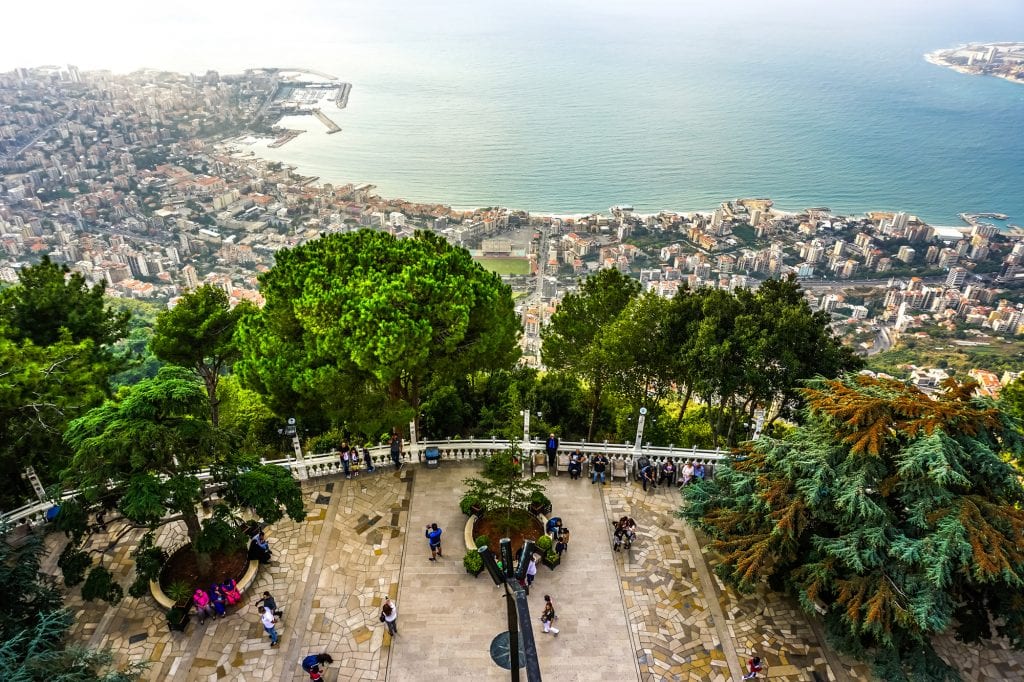
Harissa
Harissa is home to one of the most famous sights in Lebanon: the Our Lady of Lebanon statue, perched on a mountaintop, seeming to look over the nation. Come to Harissa and you, too, can enjoy this Lebanese pilgrimage site — and spectacular views at 650 meters above sea level.
The Sanctuary here was created to honor the Virgin Mary — and serves as a place for peace-gathering workshops and activities between Christians and Muslims, and denominations within Lebanon’s 18 religious groups.
The most fun way to get to Harissa is to take a cable car to the top! It leaves from the seaside city of Jounieh.
How to get to Harissa: Harissa is about a 40-minute drive from Beirut. While you can drive there, you might enjoy it more if you drive to Jounieh and take the cable car to Harissa, a nine-minute journey. For public transportation, the minibus to Jounieh leaves from Charles Helou bus station in Beirut. This day tour from Beirut includes Harissa, Byblos and Jeita Grotto.
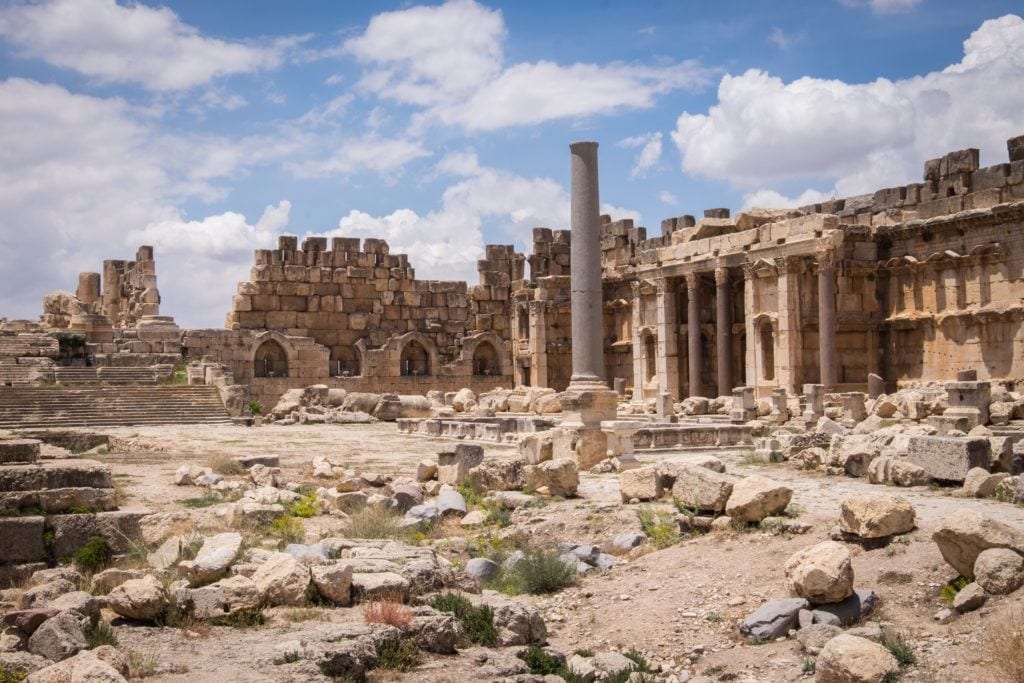
Baalbek
Get ready to see some of the best Roman ruins of your life! I’m not a huge fan of ruins in general, but Baalbek is home to some of the best ruins I’ve ever seen, the kind that stun you into silence. The scale alone is mind-boggling.
Baalbek is the ruins of the city once known as Heliopolis, the City of the Sun. The four temples here — dedicated to Jupiter, Mercury, Venus, and Bacchus, after Roman gods — are some of the largest remaining temples of the Roman Empire. You can also witness the two of the largest stone blocks in antiquity: the Stone of the Pregnant Woman, clocking in at 1,000 tons, and a block simply known as the megalith, clocking in at 1,650 tons!
If you’re looking to feel like an adventurer in Lebanon, there’s no better place than Baalbek. Climb to the top of the temples and enjoy the views around you, as the most powerful Romans once did.
Baalbek is one of Lebanon’s UNESCO World Heritage Sites, designated for its history as a Phoenician city and its enormous ruins, which are one of the finest surviving examples of Roman architecture.
How to get to Baalbek: Baalbek is about a two-hour drive from Beirut. I recommend spending a day exploring Baalbek in tandem with Anjar and the Beqaa Valley, possibly including a winery. This is best done with a private driver or day tour. This day tour from Beirut includes Baalbek, Anjar, and stop at Ksara Winery.
For public transportation, go to Cola Intersection in Beirut and say you want to go to Baalbek; you will be brought to a minibus to Chtaura, then you can change minibuses to get to Baalbek.
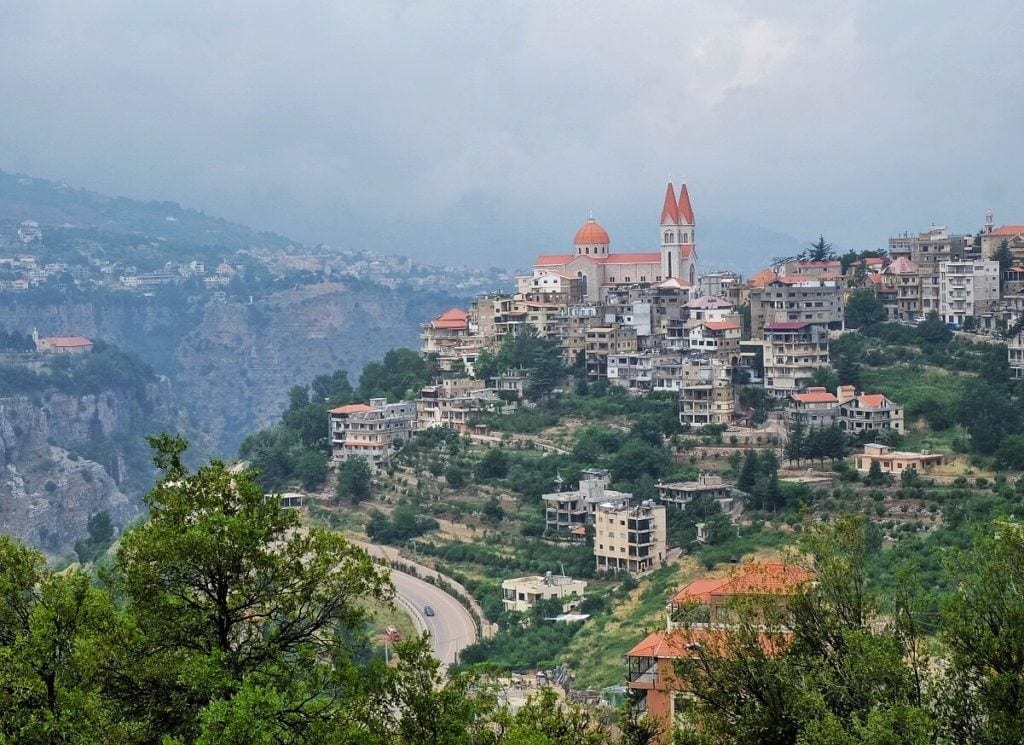
Bcharré
The drive to Bcharré, or Bsharri in Arabic, takes you through the winding roads of the Qadisha Valley, into river-carved canyons and mist-covered mountains. From there you’ll enjoy views that pull on your heartstrings. If you visit in the winter, you might even get to see snow.
Bcharré is famed for being the home of Lebanese-American poet, writer and artist Kahlil Gibran. The Gibran Museum was once a shelter for hermetic monks, carved into life from the rocks; today, it hosts Gibran’s tomb and a collection of his writings and drawings.
And the view above, one of my favorite views in Lebanon, it taken from the museum itself.
How to get to Bcharré: Bcharré is about a two-hour drive from Beirut. For public transportation, there is a daily minibus to Bcharré (Bsharri) that leaves from Dowra Intersection in Beirut. This day tour takes you through Bcharré, the Qadisha Valley, and the Cedars of Lebanon.
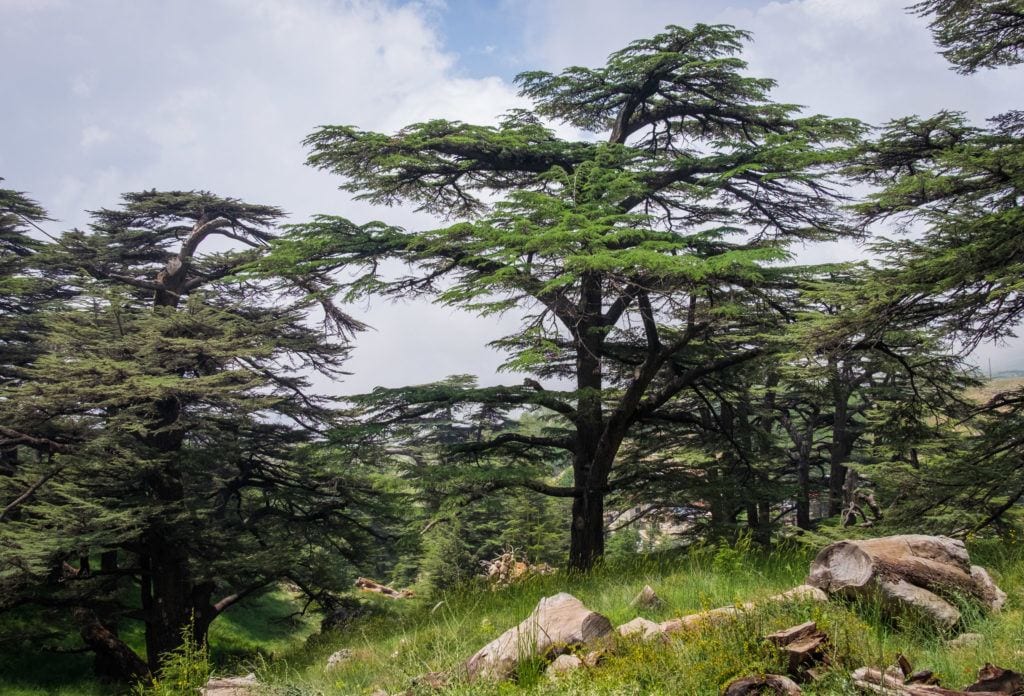
Cedars of God
Cedars are one of the most recognized symbols of Lebanon today. It proudly adorns the Lebanese flag. For centuries, these trees were lauded for their strength. The Phoenicians used their wood for boats; the Egyptians used their resin for tombs. Even U2 has a song called Cedars of Lebanon.
Sadly, there aren’t a lot of cedars remaining today. While they once covered the countryside around Lebanon, massive deforestation has led to their numbers dwindling. Cedars of God Park outside Bcharré is one of the places to see them. It’s worth visiting and hiking through the park to see their majesty up close — but seeing so few of them may leave you a bit depressed.
The cedars are fiercely protected today, however, and reforestation efforts are underway. But they take a long time to grow to adulthood, we won’t be seeing abundant cedar forests for decades.
The Cedars of God are one of Lebanon’s UNESCO World Heritage Sites, shared with the Kadisha Valley. They received this designation for their history as the most prized wood used for constructing religious buildings.
How to get to the Cedars of God: Cedars of God in Bcharré is about a two-hour drive from Beirut. For public transportation, there is a daily minibus to Bcharré (Bsharri) that leaves from Dowra Intersection in Beirut. This day tour takes you through Bcharré, the Qadisha Valley, and the Cedars of Lebanon. Alternatively, this tour gives you a full day of hiking in the Cedars.
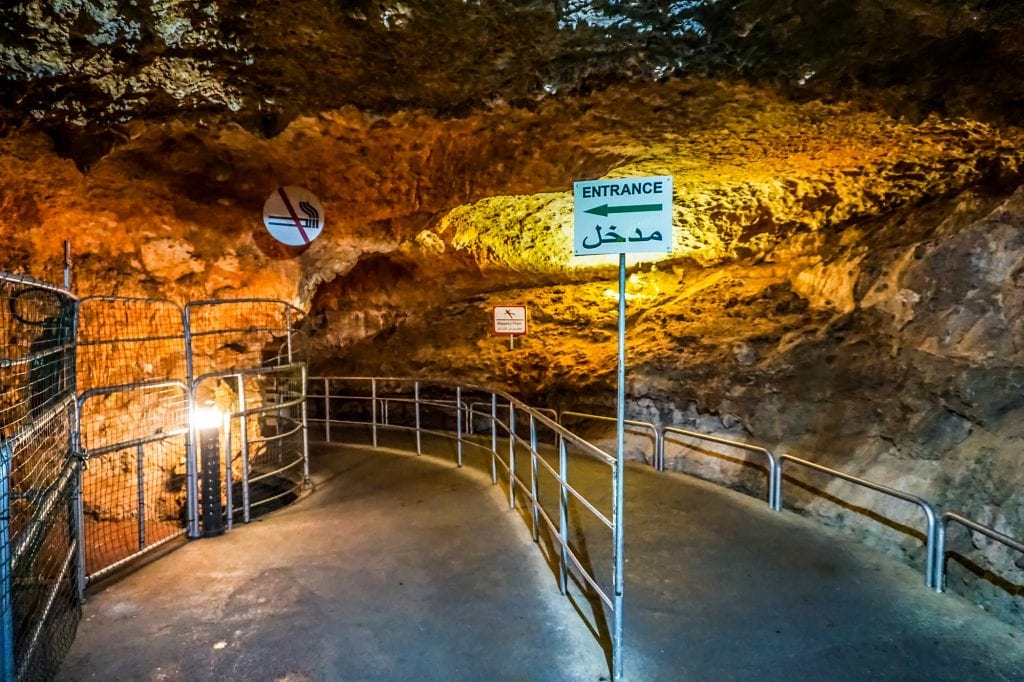
Jeita Grotto
Jeita Grotto is just outside Beirut, making it a super-easy afternoon trip (and a cool relief from a hot day!). This grotto is a system of two limestone caves. They consist of two sets of caves: the lower caves and the upper caves.
The lower caves are home to a river that provides fresh water for many people in Lebanon, and you can visit by boat. It’s a spooky but beautiful experience, especially in the boat, with the water lit up bright blue. The upper caves have a pathway to explore on foot, and they’re home to the largest stalactite in the world: 8.2 meters (27 feet) long!
Keep in mind that Jeita Grotto is VERY strict about no photos allowed. Don’t try to sneak one.
Jeita Grotto is close to Harissa and Byblos, making it a great day out to visit all three. (Though you may want to allot the most time to Byblos.)
How to get to Jeita Grotto: Jeita Grotto is about a 30-minute drive from Beirut. You can easily take an Uber there, as I did; you can’t pick up Ubers there, though, so I took a taxi from Jeita Grotto on to Byblos. This day tour from Beirut includes Jeita Grotto, Harissa, and Byblos.
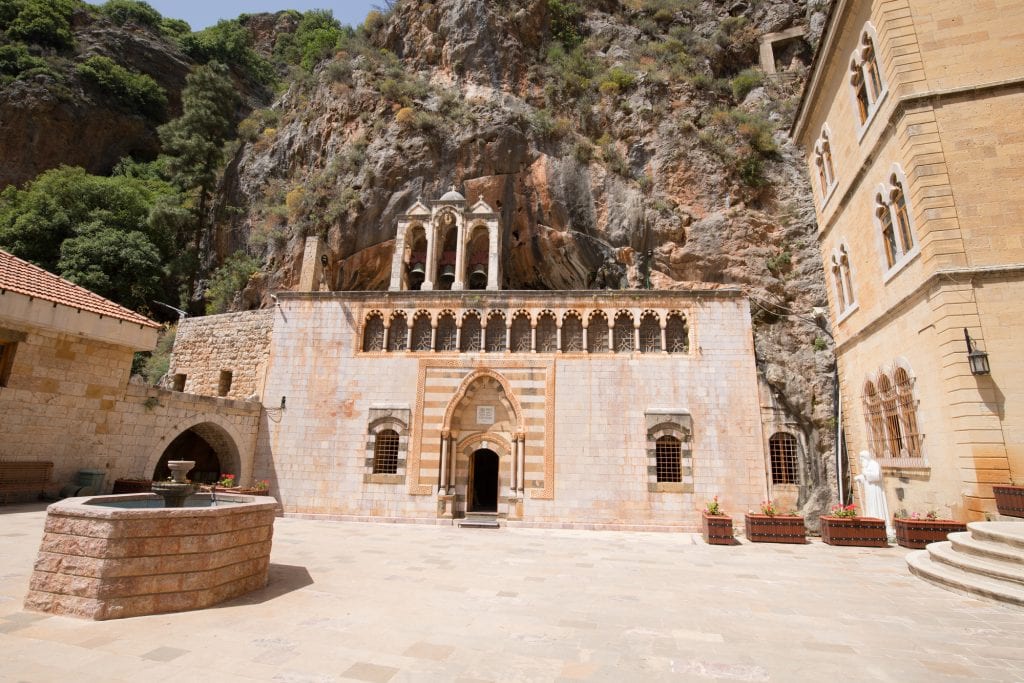
Qadisha Valley and Qozhaya
The Qadisha Valley feels like a world away from Beirut — but in a day trip you can see quite a bit of it. Mountains rise into the mist; rivers wind through the countryside, and mammoth rock faces give way to monasteries. The Qadisha Valley — also called the Kadisha Valley — was home to some of the earliest Christians fleeing persecution.
Qozhaya (Kozhaya) is one of the most important monasteries in the Qadisha Valley, and home to a convent dedicated to St. Anthony. A long drive through a wooded canyon takes you to the buildings, examples of Arabic architecture in the Middle Ages, and a rock-hewn chapel painstakingly built inside a cave.
The Qadisha Valley is one of the best places to visit in Lebanon if you’re looking to enjoy nature. Here you can hike, climb mountains, or even ski.
The Qadisha Valley is one of Lebanon’s UNESCO World Heritage Sites, designated for its history as one of the most important early Christian monastic settlements.
How to get to Qozhaya: The Qadisha Valley is about a 90-minute drive from Beirut. Qozhaya is best visited by hiring a private driver or booking a day tour from Beirut. This day tour takes you through Bcharré, the Qadisha Valley, and the Cedars of Lebanon.
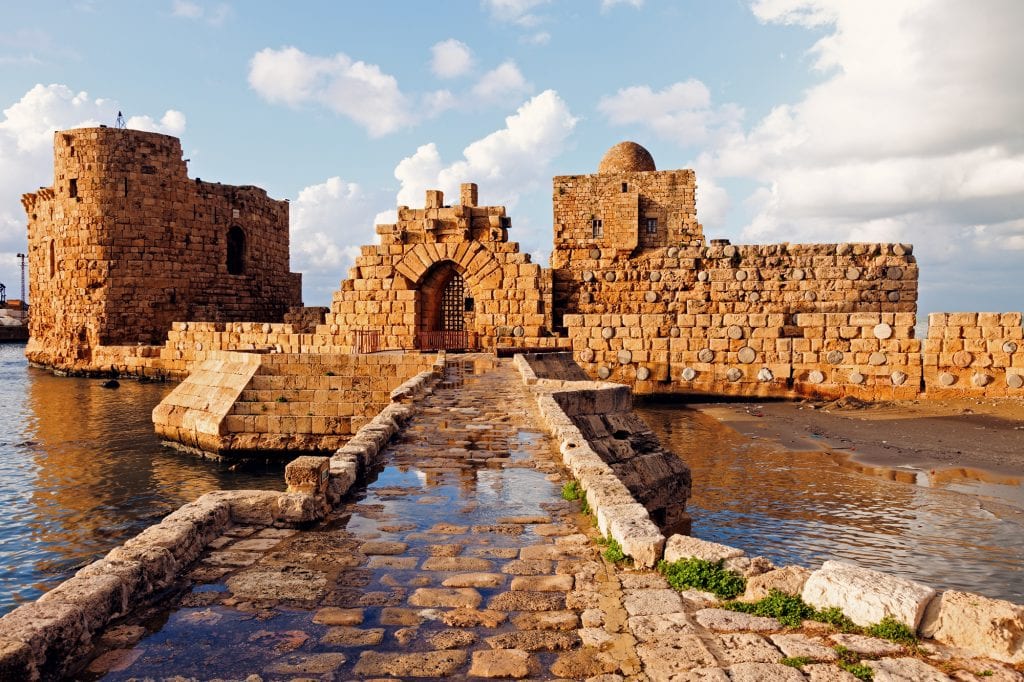
Sidon
Sidon, also known as Saida, is a port city to the south of Beirut. Though it has a storied history, Sidon is one of the lower-key, calmer cities to visit in Lebanon, and one of the easier side trips from Beirut.
Sidon is famous for two places in particular: its outstanding souks, some of the most picturesque in Lebanon, which sell both traditional and modern wares in their traditional small stalls; and the Sea Castle, which was built by the crusaders as a fortress of the Holy Land.
Sidon is about 45 minutes from Tyre, so it makes sense to pair them together on a day trip from Beirut.
How to get to Sidon: Sidon is about a one-hour drive from Lebanon. For public transportation, take a minibus to Sidon (Saida) from Cola Intersection in Beirut. This day trip from Beirut visits Tyre, Sidon, and Maghdouche.
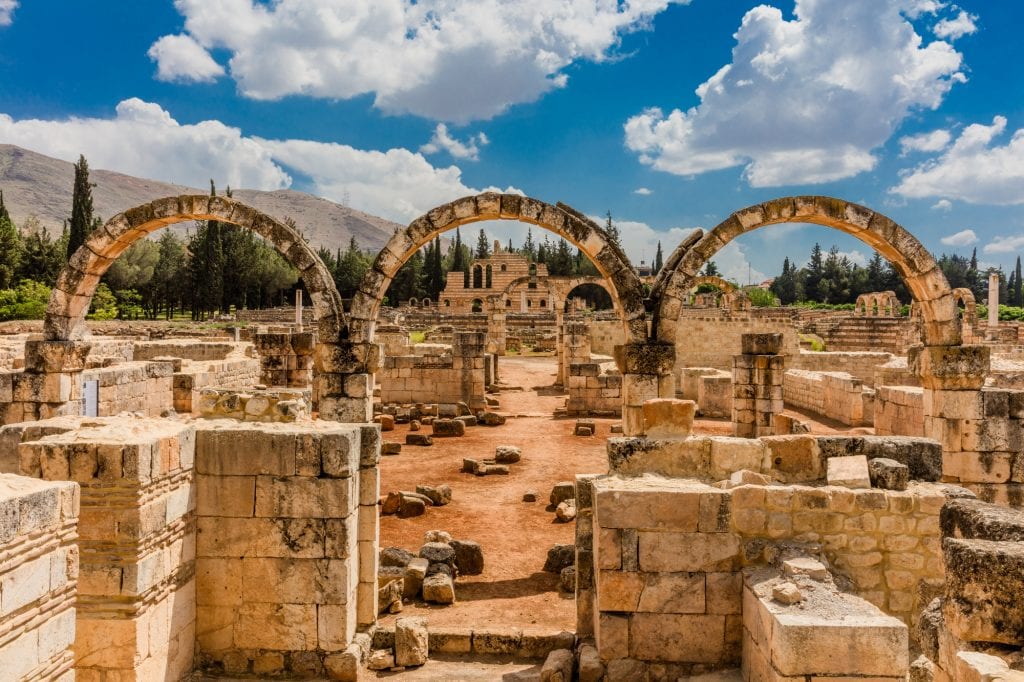
Anjar
If you’re visiting the ruins of Baalbek, you should visit Anjar too — and most drivers or tours will take you to both. Anjar may not have the sweeping majesty of Baalbek, but these ruins have something unique: spectacular arches that were designed by the Umayyads. Before the Anjar ruins were studied by archaeologists, there was no other evidence of the Umayyad Caliphate in Lebanon.
Anjar’s ruins are just a stone’s throw from the Syrian border (a mountain range divides the two countries). The city of Anjar is also home to one of the biggest communities of the Armenian diaspora in Lebanon. The city is also known for its four-sided wells.
Anjar is one of Lebanon’s UNESCO World Heritage Sites, designated for its ruins, which survive as an example of city planning under the Umayyads.
How to get to Anjar: Anjar is about a 90-minute drive from Beirut. This destination is best seen in tandem with Baalbek and the Beqaa Valley, either by hiring a private driver or booking a day tour. This day tour from Beirut includes Baalbek, Anjar, and stop at Ksara Winery.
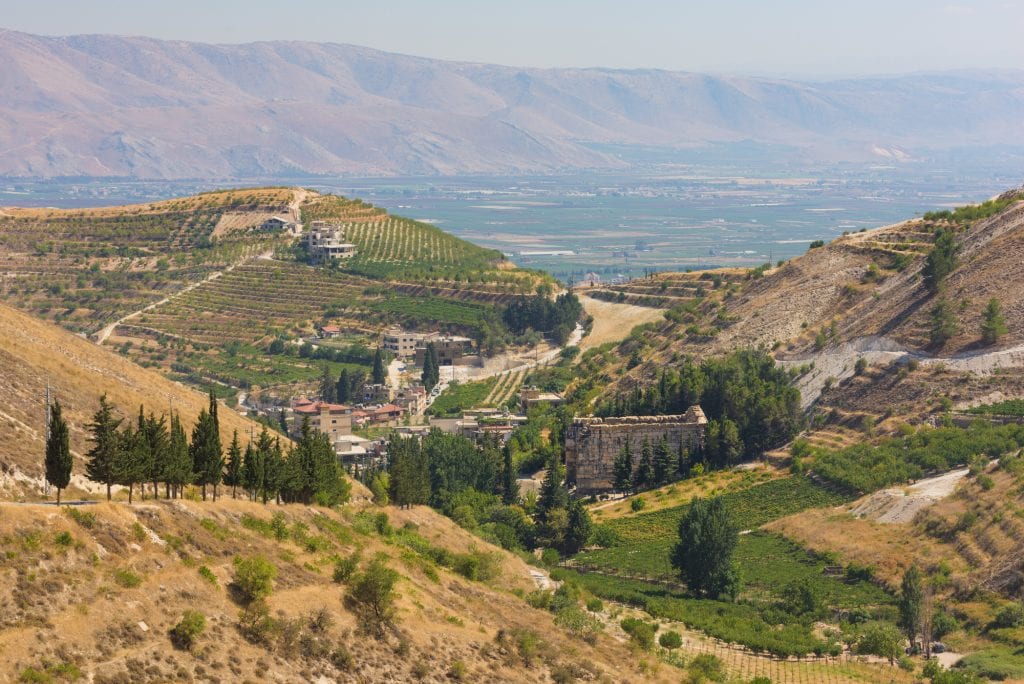
Ksara, Wine Country, and the Bekaa Valley
Did you know that Lebanon has a thriving wine scene? That might be surprising for a Middle Eastern country, but not so much in retrospective when you consider its multi-ethnic background and its location right on the Mediterranean.
The best wines grow in high-altitude areas of Bekaa Valley, close to Baalbek and Anjar. Whites are nice but forgettable; where the region truly shines is Bordeaux-style reds and dry rosés.
Chateau Ksara is one of the popular wineries and they welcome travelers for tours, tastings, and lunches. Of course, if you plan on sampling the wines, you should not be driving that day — this is a good time to come on a tour or book a private driver!
How to get to Ksara and the Bekaa Valley: Chateau Ksara is a 90-minute drive from Beirut. Many tour companies include a stop at Chateau Ksara as part of their tours in the Bekaa Valley. This day tour from Beirut includes Baalbek, Anjar, and stop at Ksara Winery. Alternatively, this wine tour spends the whole day visiting wineries in the Bekaa Valley.
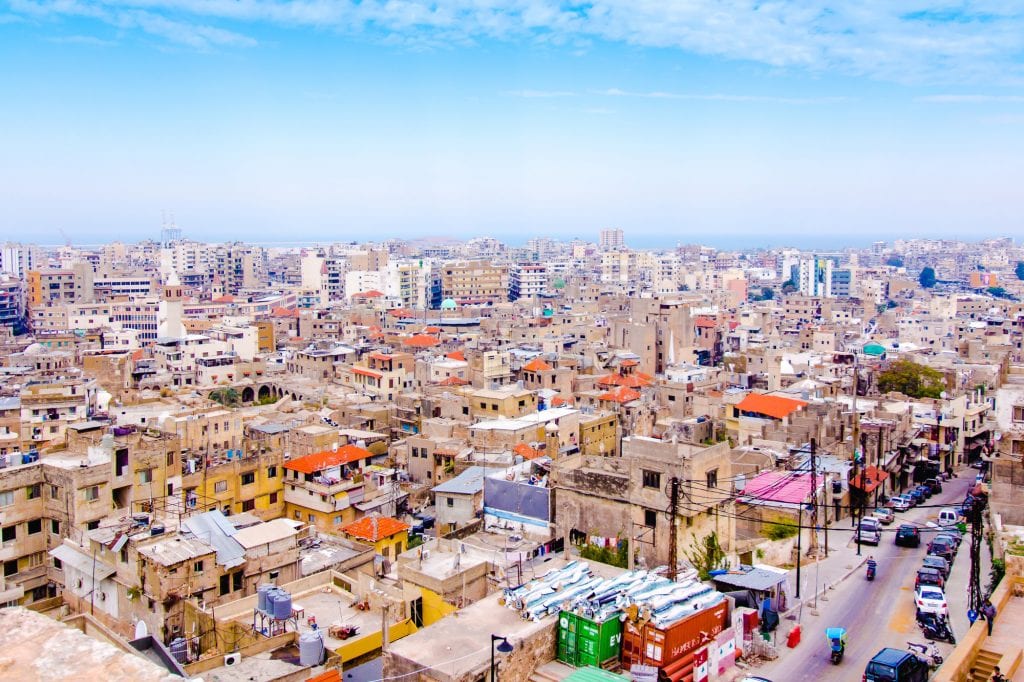
Tripoli
Finally, there’s Tripoli, or Trablous in Arabic — the second-largest city in Lebanon and a place that isn’t on most travelers’ itineraries. (Oh, and it’s definitely not the Tripoli in Libya!) If you do visit, though, you’ll get to enjoy a warm and welcoming city little-touched by tourism.
Tripoli has seen some hard times, and it’s one of the poorer cities in Lebanon. But there is a lot of beauty here — an Old City brimming with Mamluk architecture; dozens of souks, some of which specialize in gold or silver or fruits and vegetables or soap; and friendly locals eager to welcome you.
The El Mina neighborhood of Tripoli almost feels like another city, more like a calm seaside village. Offshore you can visit the Palm Islands Reserve and its protected turtles. Be sure to try some of Tripoli’s famous sweets (and if you’re a foreigner in the souk, everyone’s going to want you to sample theirs!).
How to get to Tripoli: Tripoli is a 90-minute drive from Beirut. For public transportation, take the Connexion bus from Charles Helou Station, which takes closer to two hours. This Tripoli day trip from Beirut gives you several hours in Tripoli, plus a stopover in Batroun or Byblos on the way back.
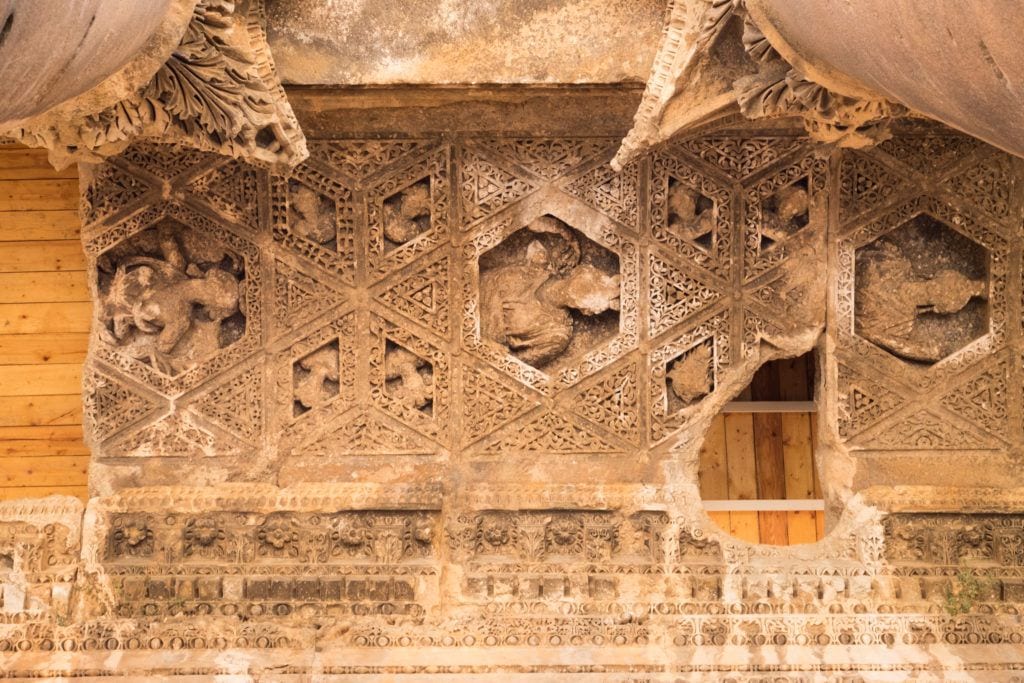
Is Lebanon Safe?
Is it safe to travel around Lebanon? Like most places in the Middle East, Lebanon is a lot safer than cable news would have you believe. The media paints the image of war, suicide bombers, and riots. Lebanon does have its problems — and has had some tough situations in recent years — but it’s not a war zone.
I traveled Lebanon as a solo woman in 2018 and didn’t feel uncomfortable at all — in fact, I was pleased with how much respect I was given as a woman. Then again, I chose not to visit Tripoli on advice from a local woman who advised me not to go alone (though other locals later told me that as an experienced solo traveler, I would have been fine).
In many ways, I felt safer as a woman in Lebanon than I have felt in many other countries. At one point, I had to sit next to a man on a minibus (usually women are sat next to women, but sometimes there’s a full bus and no other option). The man left six inches of space between us! That NEVER happened on the subway in New York!
Another issue is that part of the Bekaa Valley, including Baalbek and Anjar, is controlled by Hezbollah. When you enter that area, you pass through military checkpoints, as you do throughout Lebanon. (They are fast and easy and the guards usually have a smile for you.) Yes, it’s unnerving, especially since Hezbollah flags are for sale as souvenirs (!!), but most of the time tourists are able to visit safely.
The most important thing is to do your research before you arrive. Lebanon is not a place to arrive on a whim; doing proper research is essential. So where do you start?
I found this detailed post by Against the Compass to be an excellent resource for travel safety in Lebanon. It’s updated periodically with the latest safety information. I encourage you to save it and take a closer look before your trip.
I also recommend checking out the US State Department travel advisory and UK travel safety advice for Lebanon. I find that the US warnings tend to be more alarmist, while the UK warnings tend to be more realistic.
Most importantly, travel insurance is essential for trips to Lebanon — and to anywhere else in the world, frankly. If you need to be hospitalized with a broken bone or appendicitis, or if you have an emergency and miss your trip, or if you get robbed on a bus, travel insurance will help you recoup your financial losses. I use and recommend World Nomads.
Read More:
Solo Female Travel in Lebanon: Is it Safe?
Top 10 Travel Safety Tips for Women
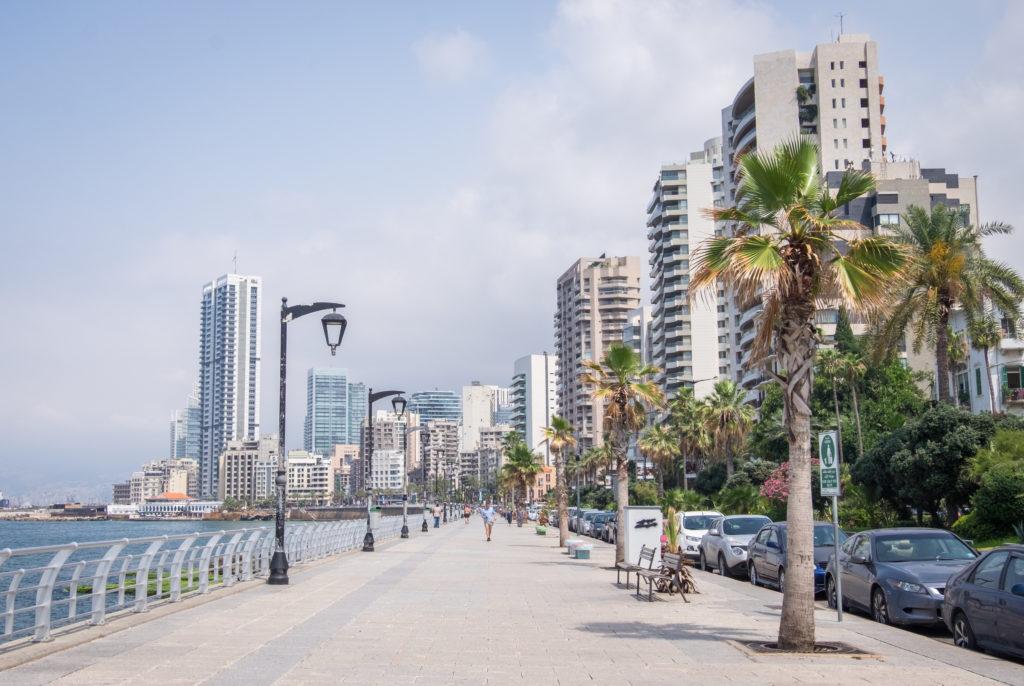
Where to Stay in Lebanon
Where’s the best place to stay in Lebanon? If you’re trying to see a lot of the country in a relatively short amount of time, it makes the most sense to stay in Beirut and do day trips. I stayed at the Radisson Blu Martinez. But there are options for all kinds of travelers.
If you want a fancy, crazy luxury experience: If you want top-notch luxury finishings and decor, go with the Sofitel Beirut Le Gabriel — it’s the best. If you want a splashed-out resort experience, go with the Movenpick Beirut, which has its own massive beach club.
If you want a small but funky local boutique hotel: The Albergo Hotel in the Achrafieh neighborhood has plant-filled terraces, local over-the-top decor, and a rooftop with a pool and outstanding views of the city.
If you want a mid-range hotel: The Radisson Blu Martinez, where I stayed, ticks all the boxes. The rooms are simple and the decor is dated, but it’s a solid option in a great neighborhood close to everything.
If you want a cheap but value-for-money place to stay: Loft 29 Residence is in the heart of the cool Hamra neighborhood, has all the facilities of apartments like laundry and a kitchen, and offers a free airport pickup in addition to very well-priced rooms.
Find deals on more places to stay in Beirut here.
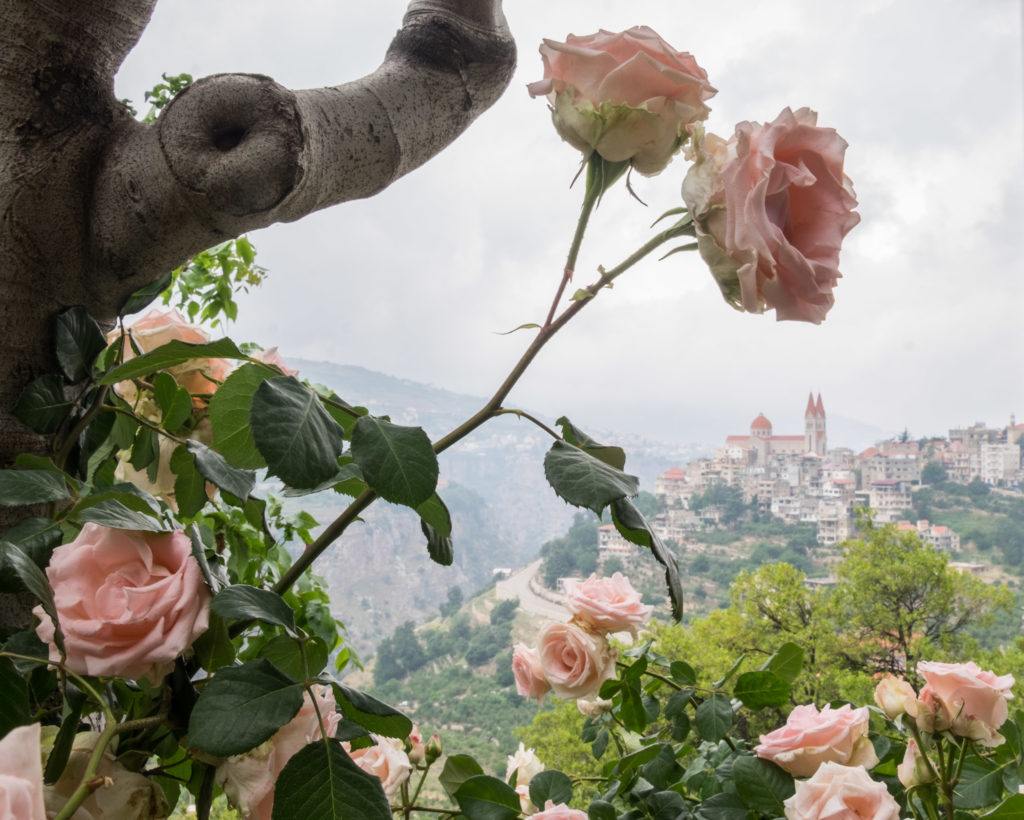
How to Get Around Lebanon
There are three main ways to get around Lebanon: you can get around by driving (either renting a car, hiring a private driver, or using Uber for short distances), you can take public transportation (mostly minibuses), or you can book organized day trips.
Should you rent a car in Lebanon? For most people, I don’t recommend it. Lebanon is home to some of the worst driving I’ve ever seen (it’s up there with Georgia and Malta). Traffic into and out of Beirut is hectic, and drivers don’t hesitate to cut across entire highways, with no warning or turn signal.
I’ve driven in lots of countries, but I had ZERO desire to drive in Lebanon once I realized how crazy it would be. You may be different, though. If you thrive in driving in erratic environments, you might enjoy driving in Lebanon.
Otherwise, there’s hiring a private driver (which can start at $150 per day and get pricier from there); and hiring one-way taxis and/or Ubers. Ubers are mainly based in Beirut, so you’ll need to use taxis on the way back.
It’s also worth noting that not a lot of drivers in Lebanon have working seat belts in their cars.
Taking public transportation is another option. Minibuses operate from Beirut all over Lebanon, departing from Cola Intersection (usually points northeast and south) and Charles Helou Bus Station (usually points north).
It’s chaotic when you get there and it seems like there are no rules! But ask where you’re supposed to go and people will help direct you. Women are sat next to women on minibuses unless there’s no other option; you pay when you arrive at your destination. Bring small bills.
I found Tyre and Sidon to be an easy day trip to do by public transportation: it’s a straightforward journey down the highway; the minibuses drop you off in town; both cities can be easily explored on foot.
Finally, there are group day tours from Beirut. I’m not usually a take-a-day-tour-on-the-bus person, but I was glad I did two tours in particular: one to the Qozhaya Valley with Bcharré and the Cedars of Lebanon, and one to Baalbek, Anjar, and Ksara Winery. Those trips would be impossible to do in a day on public transit, and they went too far for an Uber or cab driver.
More on Lebanon:
What’s It REALLY Like to Travel in Lebanon?
Solo Female Travel in Lebanon: Is it Safe?
More from the Middle East:
Hanging Out in Kadikoy in Istanbul
Visiting the Burj al’Arab in Dubai
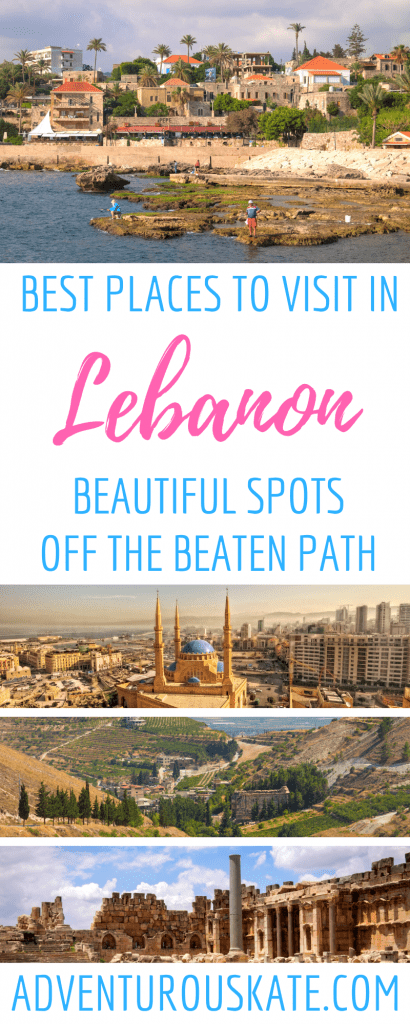
Have you been to Lebanon? What are your recommendations?